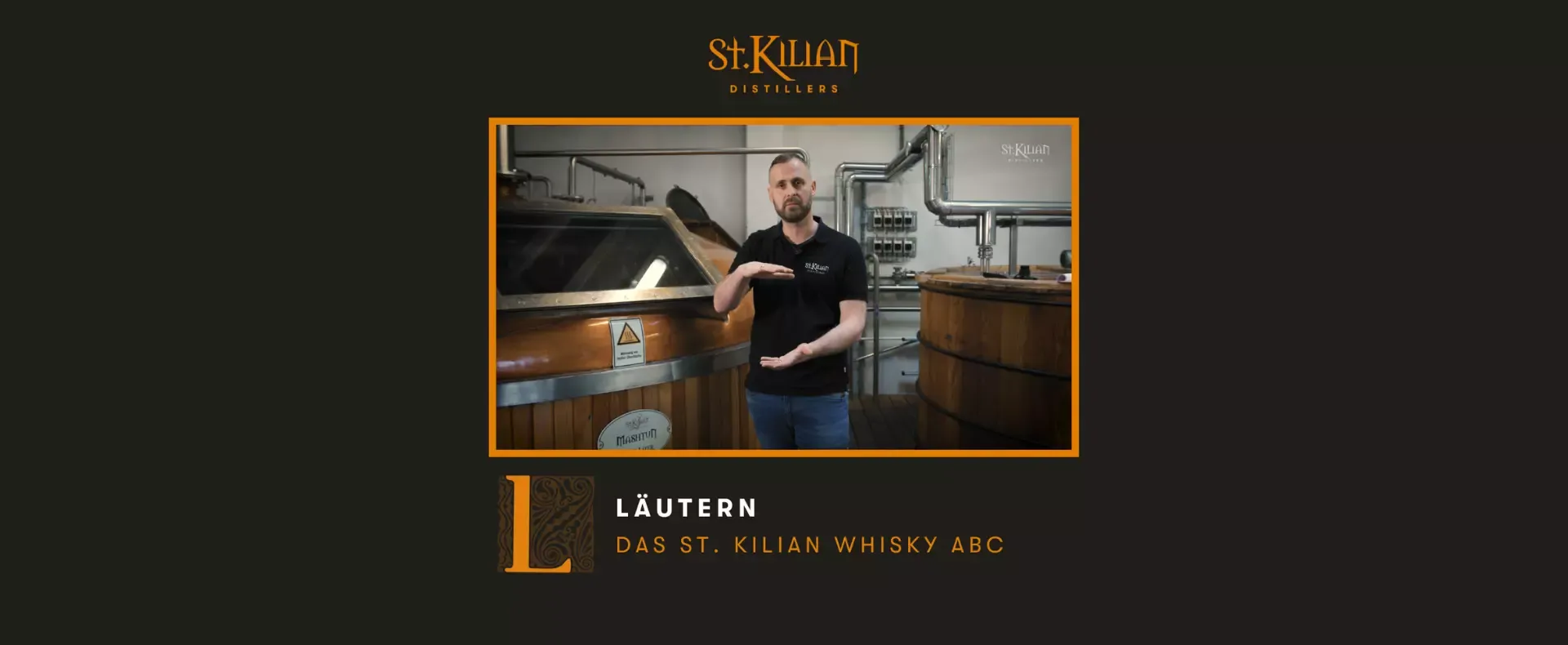L - like lautering

What does the term lautering mean?
Lautering refers to the separation of the solid from the water-soluble components of the mash via the sieve bottom of the lauter tun, the so-called mash tun.
What is separated?
The separated solution is called wort. It is an ocher to brownish, clear to turbid liquid containing mainly fermentable sugars as well as amino acids and smaller protein fragments. The solid, water-insoluble components of the mash, called spent grains, remain in the lauter tun.
What happens to the wort?
The sugary wort is cooled via a plate heat exchanger and transferred to our open, wooden fermentation vats - the washbacks - for the next production step. The addition of dry yeast then starts the alcoholic fermentation. Unlike some other processes in the whiskey industry, where the entire mash, including the solid components of the barley grist, is fermented, we ferment only with the soluble wort.
How does the lautering process take place in detail?
Lautering is a continuous process. First, the 63.5 °C hot mixture of grist and water is introduced into the mash tun, which is called mashing-in. Then enzymatic processes take place in which the starch in the barley malt is converted into soluble, fermentable sugars and the proteins are converted into amino acids. After about 30 minutes, the aqueous solution is filtered off the solid, insoluble components, with the spent grains forming above the sieve bottom of the lauter tun acting as a filter so that the wort runs off clear after a short time. While the wort is being filtered off, further water is fed into the mash tun from above at a now higher temperature. This step is called "sparging" or "sparging". These process steps - lautering and sparging - are repeated two to three times, each time as the temperature of the added water increases, so that the enzymes can do their work optimally in a temperature range from 63.5°C to about 80°C. At the end, the filtered wort is filtered through a filtering chamber. At the end, the filtered wort is either collected in a collection tank or pumped directly into the fermentation vat. It now contains all the extract substances of the barley malt that the yeast needs in the next production step for successful fermentation.
How can the lautering process be controlled?
Lautering can be controlled classically via the underback, which is connected to the lauter tun. This is an intermediate column through which the wort flows. In the optimum state, the liquid level of the drawn-off wort in the underback matches the level of the surface of the mash in the lauter tun. The underback thus maintains the hydrostatic equilibrium of the mash. Any difference in liquid levels is a good indicator of lautering problems.
What is a differential pressure measurement?
The lautering can also be controlled by a so-called differential pressure measurement. In contrast to the underback, this is the more modern method and is performed exclusively by us. If the spent grains cake compresses too much during lautering, so that the liquid only passes through with difficulty, but continues to be drawn off at the bottom, then a pressure difference arises above and below the sieve bottom. This can be measured by means of built-in pressure sensors. In this case, the production team can counteract by readjusting the lautering speed. If necessary, the compacted spent grains cake must be loosened up by the agitator chopper in our Mash Tun, thus restoring its permeability for the wort.
What is the nature of the wort?
Typically, a hazy spice promotes a richer style of distillate, while a clear spice produces a lighter, fruitier New Make. At St. Kilian Distillers, we strive for a largely clear, subtly hazy spice to emphasize the malt character in our New Make. The nature of the wort is thus another influence and one of several factors that together determine the character of the New Make spirit.
What is the prerequisite for optimal lautering?
The quality of the crushed barley malt is a very important factor in ensuring that lautering produces an optimum result. This is because a certain proportion of husks creates a loosened filter layer in the spent grain cake that is optimally permeable for lautering. Therefore, the upstream process, crushing, plays an enormously important role.